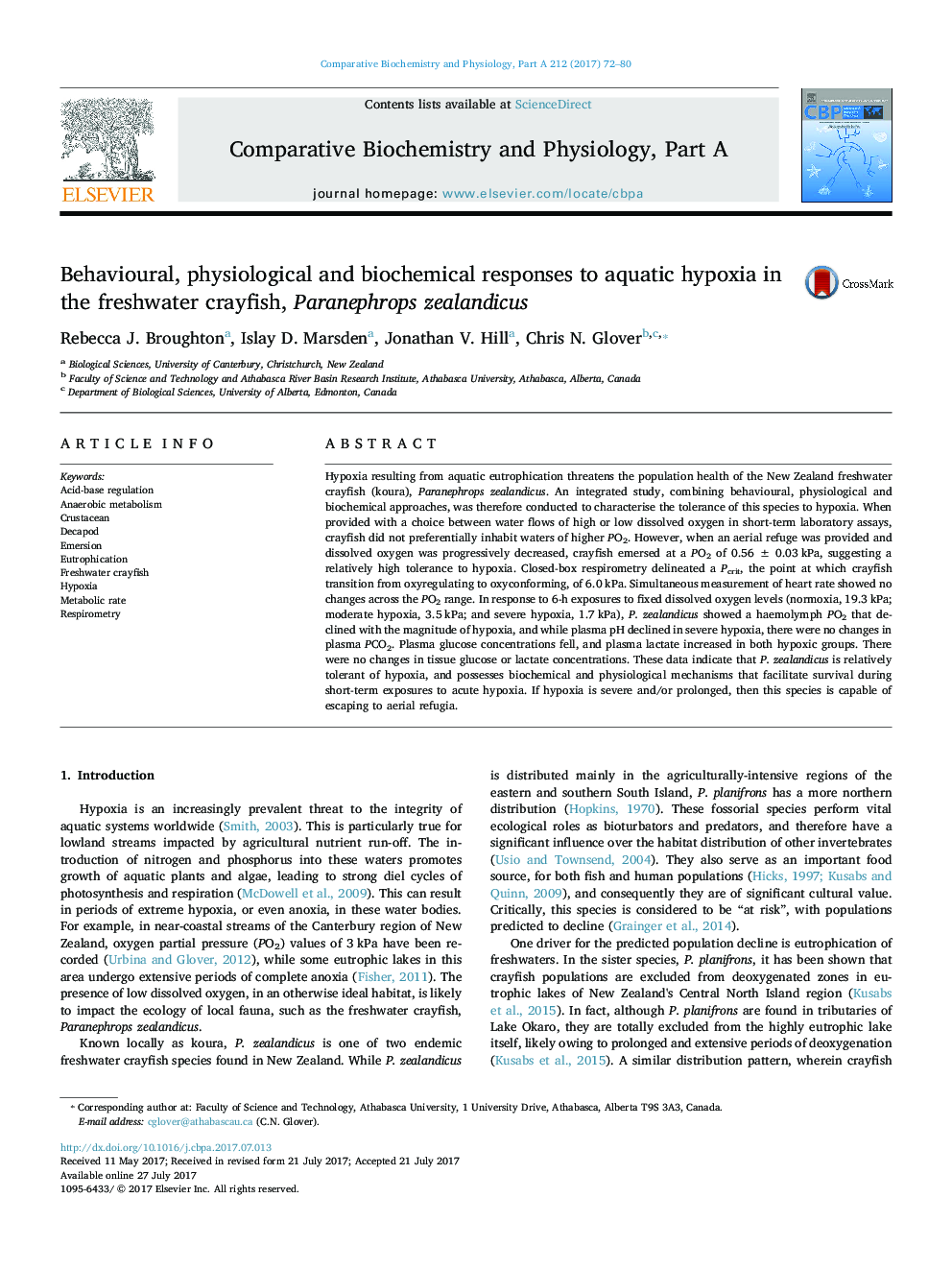| Article ID | Journal | Published Year | Pages | File Type |
|---|---|---|---|---|
| 5510257 | Comparative Biochemistry and Physiology Part A: Molecular & Integrative Physiology | 2017 | 9 Pages |
Abstract
Hypoxia resulting from aquatic eutrophication threatens the population health of the New Zealand freshwater crayfish (koura), Paranephrops zealandicus. An integrated study, combining behavioural, physiological and biochemical approaches, was therefore conducted to characterise the tolerance of this species to hypoxia. When provided with a choice between water flows of high or low dissolved oxygen in short-term laboratory assays, crayfish did not preferentially inhabit waters of higher PO2. However, when an aerial refuge was provided and dissolved oxygen was progressively decreased, crayfish emersed at a PO2 of 0.56 ± 0.03 kPa, suggesting a relatively high tolerance to hypoxia. Closed-box respirometry delineated a Pcrit, the point at which crayfish transition from oxyregulating to oxyconforming, of 6.0 kPa. Simultaneous measurement of heart rate showed no changes across the PO2 range. In response to 6-h exposures to fixed dissolved oxygen levels (normoxia, 19.3 kPa; moderate hypoxia, 3.5 kPa; and severe hypoxia, 1.7 kPa), P. zealandicus showed a haemolymph PO2 that declined with the magnitude of hypoxia, and while plasma pH declined in severe hypoxia, there were no changes in plasma PCO2. Plasma glucose concentrations fell, and plasma lactate increased in both hypoxic groups. There were no changes in tissue glucose or lactate concentrations. These data indicate that P. zealandicus is relatively tolerant of hypoxia, and possesses biochemical and physiological mechanisms that facilitate survival during short-term exposures to acute hypoxia. If hypoxia is severe and/or prolonged, then this species is capable of escaping to aerial refugia.
Keywords
Related Topics
Life Sciences
Biochemistry, Genetics and Molecular Biology
Biochemistry
Authors
Rebecca J. Broughton, Islay D. Marsden, Jonathan V. Hill, Chris N. Glover,
